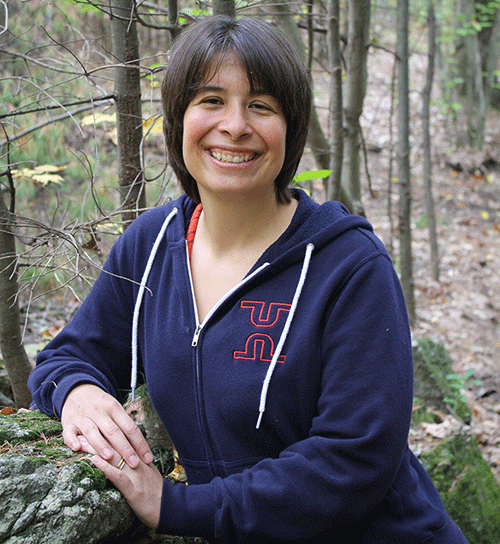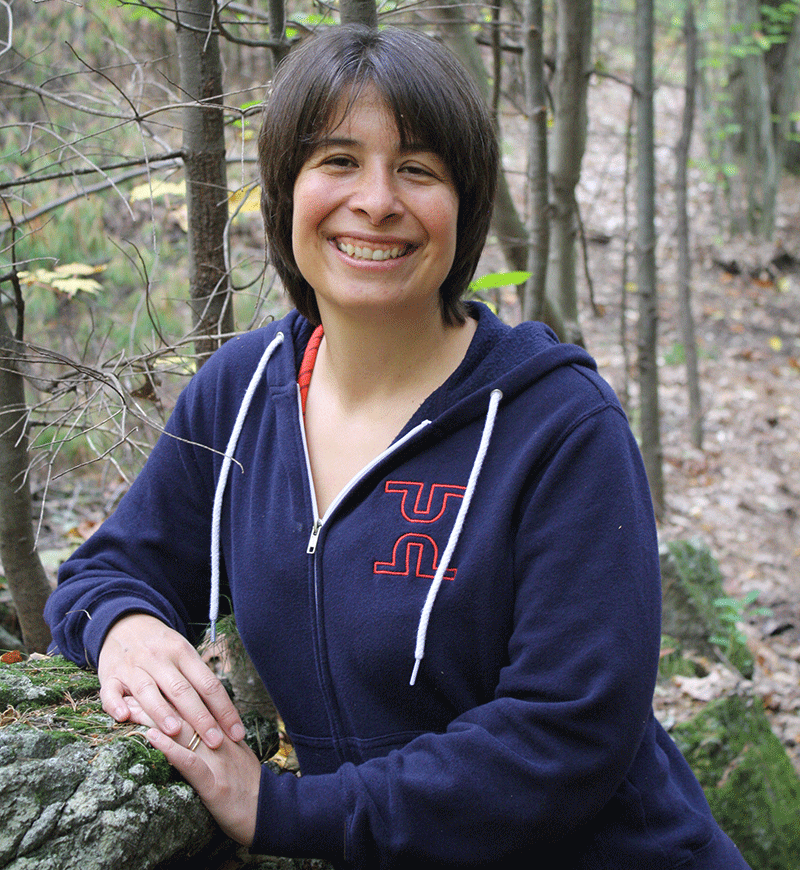Q&A: Physics of the Animal World
Anette “Peko” Hosoi’s research interests lie at the intersection of mathematics, physics, engineering, and biology. They take her group in unconventional directions—for a while one of her grad students was the only researcher licensed to harvest razor clams in Massachusetts. But Hosoi, a professor at the Massachusetts Institute of Technology, tackles problems as a physicist, dialing down their complexity, while still capturing the essence of the phenomena she wants to study.
Influenced by the natural world, Hosoi analyzes animal behaviors and then engineers robots that can perform the same tricks. She has studied snakes sliding on sand, snails crawling upside down and beneath the surface of water, and—of course—razor clams burrowing through wet soil. Physics caught up with Hosoi to find out which wild creatures are presently capturing her attention.
–Katherine Wright
What are you currently working on?
My new interest is the physics of sports. I have one project on human endurance in long-distance running and biking. And I've got another project on thermal management in semiaquatic mammals, which use a combination of blubber and fur for insulation.
What interests you about how these mammals control their temperature?
We would like to know under what conditions fur entrains air and how this affects thermal management strategies. If we can understand how hair density and geometry lead to air entrapment, we can use this knowledge to design new fabrics that trap air and are lightweight, insulating, and—ideally—shed water quickly. These are all desirable properties of a wetsuit.
Many of your projects are related to animals and the natural world. Why do they intrigue you?
I am very much inspired by what I see around me everyday. Physics spans everything from the very, very small to the very, very large. The part that I love most is the part that we interact with, the biological and mechanical systems that we encounter every day. One of the reasons that I like them is that you can easily check if you are right. It’s not trivial, but it’s much easier than measuring elementary particles, or looking far out into the cosmos.
What “big questions” are you trying to answer?
It’s easy to get lost in the complexity of biology. However, it’s important to remember that biology is constrained by physics. For example, the physical principles of drag underlie how clams dig, how leaves bend, and the morphologies of microorganisms. One theme of my research is trying to understand the physics behind the strategies and forms we see in biological systems, and then using those principles and mechanisms to improve engineering design.
Are there experiments that you want to do, but can’t because they are too practically difficult?
I've got lots of questions waiting on the back burner. For example, after a workshop in Maui, one of my students developed a framework for evaluating trade-offs in kite boarding. If you are going to upgrade your equipment, should you buy a new kite or a new board? To understand the trade-offs we need to measure drag coefficients and other parameters for each part. I would love to get a pile of boards and test them in our tow tank, where we drag objects over water, and do an analogous set of experiments with the kites, maybe towing them behind a truck since the wind tunnel isn't big enough.
What advice would you give to a graduate student, or postdoc just starting out in your field?
Keep an open mind and take opportunities when they come. One of the ways that I find all these projects is that I talk with people who do things that are very different from what I do. These conversations sometimes take work and investment. But it has always been worth the effort.
Know a physicist with a knack for explaining his or her research to others? Write to physics@aps.org. All interviews are edited for brevity and clarity.





